Half Life – The 'Punxploitation' Love Story Twin Cities PBS Made in 1985
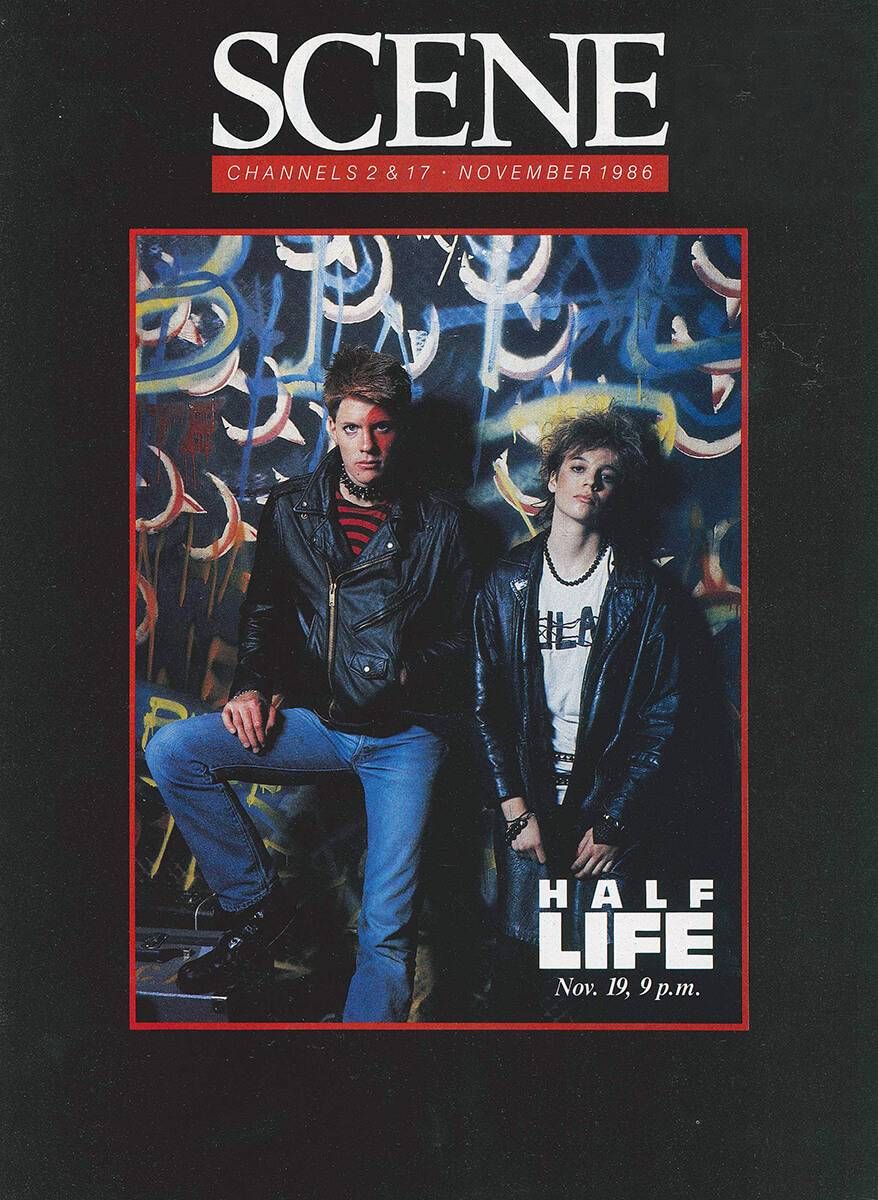
"Punxploitation" was a genre that sprung up in the early 1980s, most famously on prime-time television in episodes of Quincy and CHiPS. It also popped up in crime dramas like the feature film Class of 1984. Punks were aesthetically interesting, with colorful, spiky hair and slogan-covered leather jackets. They made perfect bad guys, mostly because writers, producers and directors had no clue why teenagers would want to embrace this genre of music and style.
The original Twin Cities PBS hour-long drama Half Life fits this mold. It was actually written by someone who knew the punk scene well. The director had just spent two years learning his trade in Hollywood, but somewhere along the journey, the production lost its way. The punks depicted in this movie are basic, mean, drunk and dangerous - and their only purpose is to motivate the main character to find himself. Now in the context of history, the story is a little wince inducing.
Regardless, we are proud to present a jewel from the Twin Cities PBS archives, an original one hour (47.5 minutes, actually) punk-rock narrative, romantic musical: the one, the only… Half Life.
Okay, so maybe it's not the midwestern Citizen Kane, but it is an archive of a time and place in Minneapolis. So what was the back story of this movie? We wanted to pull the curtain back and show how a film like this was created and how it was received by its own community.
AN ORAL HISTORY OF HALF LIFE
From the Star Tribune article "KTCA Now Making Movies": "Half Life is the first production of The Screenplay Project, KTCA's ambitious plan to commission and produce five screenplays by Minnesota writers. Half Life, is by St. Paul writer Tom Sauegling; to direct, KTCA brought in Ken Selden, a highly regarded young filmmaker who recently completed a two-year fellowship at AFI in Los Angeles. Half Life, filmed last November at 37 locations in and around the Twin Cities, cost about $200,000 to produce. The money came from grants from the Jerome Foundation, the Dayton Hudson Foundation, Dayton's and Target Stores, the Corporation for Public Broadcasting and the Central Education Network. - Noel Holston, November 16, 1985
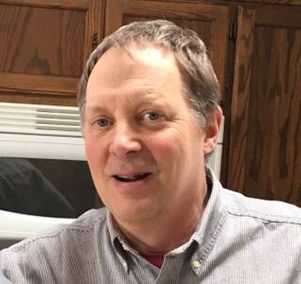
Tom Saeugling (Writer): I had been thinking about the story for four years off and on. In the summer of '84, I was in a Film in the Cities screenplay class on adaptation. I couldn't think of a story to adapt, so I wrote what was percolating in my head. I was a big fan of the punk scene in Minneapolis from 1976 through the mid '80s.
One summer night in '76, a friend said we should go out to Chanhassen to see a Minnetonka band called the Suicide Commandos, who he heard were different. The local music scene at the time was a real bore, lots of hippie hangover mixed in with funk/disco and FM rock covers. We saw the Commandos that night and went nuts. It was raw, fun, funny, exciting - just exhilarating. There was this one long-haired hippie leftover who got up and went nuts dancing. You could see him shedding his hippie skin right before your eyes. A few months later he had his hair cut short, wore a leather jacket and was the first old punk. At this time, no one had heard of the Ramones or the Sex Pistols, but the same thing was happening here as in New York and London, just on a Midwestern level.

Catherine Allan (Producer): In 1985, KTCA [former name of Twin Cities PBS] was doing a lot of creative original programming. I was a producer and became interested in the local theater scene and wanted to produce drama for tv. I developed a series, The Screenplay Project, funded by the Jerome Foundation, five dramas by local playwrights and screenwriters adapted to television. Half Life was a screenplay by Tom Saeugling chosen by a panel of judges from more than 100 submissions.
Tom Saeugling (Writer): In the summer of '80 at the 7th Street Entry, there was a guy, about 21, who was odd and completely in love with the punk scene. He would go wild when he liked a band and was socially inept as could be. I became something of a big brother to him as he would get in trouble because of his awkwardness. I've spent the last 30 years working with people with Schizophrenia and other serious mental illnesses. Looking back, he was probably getting ill around this time. He disappeared by fall, but I often wondered about him. That fall, I went to England and lived there a while. Most of the incidents in the script are based on things that happened there in the punk clubs, just transferred to the Midwest. A friend of mine was in the screenwriting class with me, and she encouraged me to enter the script in the KTCA contest. I didn't want to enter, but did so on the last day, delivering it on my bike.
The producer called me on the phone, and I went in to meet her and that was that.
Catherine Allan (Producer): I decided to hire Ken Selden, a recent winner of an AFI prize for promising directors. He had done a film with a similar sensibility and seemed like a good fit. He, in turn, chose the main actors.
Ken Selden (Director - from Scene magazine in 1986): The situation really appealed to me, I'd worked with smaller productions, and had been getting offers to make things with much higher budgets, and I felt this was a good intermediate step. I knew something about the subject matter and wanted to do something for television.
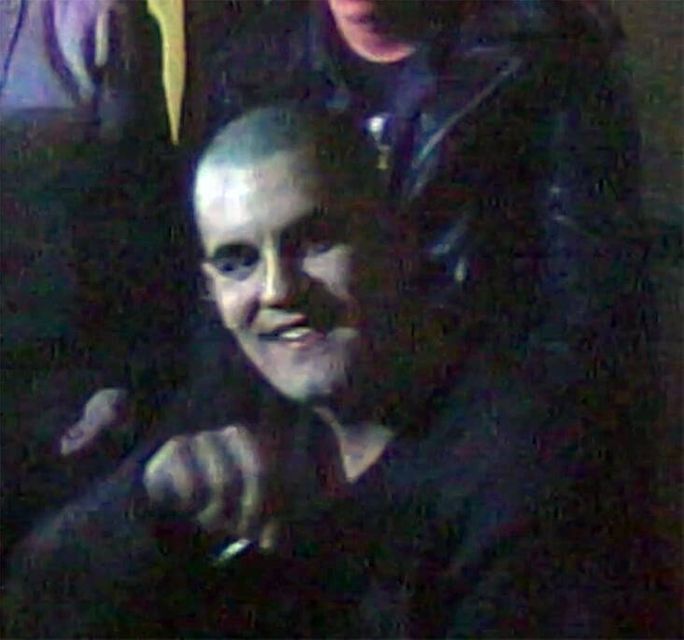
Paddy Mulloy (Punk extra and Assistant Set Designer): I found out the film was looking for extras when the director, Ken, came up to a group of my friends and asked us for a light for his cigarette or something like that. I remember him talking about another film of his - I think he was talking about one he did where he used only "street kids" for the cast. I had already been an extra on Purple Rain and got 30 bucks a day, a box lunch, and packs and packs of cigarettes, and I had a good time being there, so I was game to see what Half Life was all about. I ended up going to a St. Paul PBS studio and trying out for the male lead – at first they were leaning toward the male lead being the punk rocker to the female lead's country girl. When I read for the part, I was scared shitless and I just kept on repeating to myself how would Han Solo deliver this. I think it was during the second callback Ken told me they were making the male lead the country boy and the female the punk, and that I was out but they would find something for me.
Catherine Allan (Producer): Director Ken Selden wanted revisions to the script and there was a lot of back and forth with Tom, who was resistant to changes. It was a difficult process.
The original script has many differences from the filmed screenplay. In Tom's manuscript, Oswald is a city punk, while Kristel is a country girl. There is also a character named "Teen Idol," who was completely cut out of the finished film.
Tom Saeugling (Writer): Seldon and I worked together at first. He made it clear he thought it needed a rewrite. First thing he said was, "Should we change the title, what does 'half life' mean?" Then, "Teen Idol has to go. What's he doing there? He's a character from some other movie, not this one."
It went downhill from there. I realize the director is the driving force behind a film, and he had to do it the way he saw it, but he really made a film loosely based on the original screenplay - Seldon kept giving me rewrite after rewrite and wanting my OK and input. At some point I had to distance myself from the whole process.
Paddy Mulloy (Punk extra and Assistant Set Designer): I remember someone saying that the author had hung out in the early punk scene in Minneapolis or something and that the story was taking swipes at the "new punks" and I thought it was a laugh. I had already heard that shit from the assholes that followed around Husker Du and pretended to have bands or be artists. I give them credit for loving Land Speed Record, but I thought very little of most of them. It was nothing more than the ruling party's line written for them by the guy that came before them to be repeated and repeated until they die.
(From Scene magazine 1986): Casting the show involved assembling credible punks from the local scene to be brawlers in the Gulag. About 100 were picked during a mass audition at the 7 Street Entry. They didn't need any makeup and were more than willing to learn how to fake fights.
Tom Saeugling (Writer): The producer was very good about involving me in the casting of actors and bands and the director. I saw Seldon's student film, and it was great. I thought he was the guy to do this.
I even found an actress at a local play who I thought would be good, and they auditioned her. The actress they finally got was great. It was very hard to find an Oswald.
As for the bands, we had Ottos Chemical Lounge, a couple of bands whose names I forget, oh yeah, Run Westy Run came in. Soul Asylum came in and read.
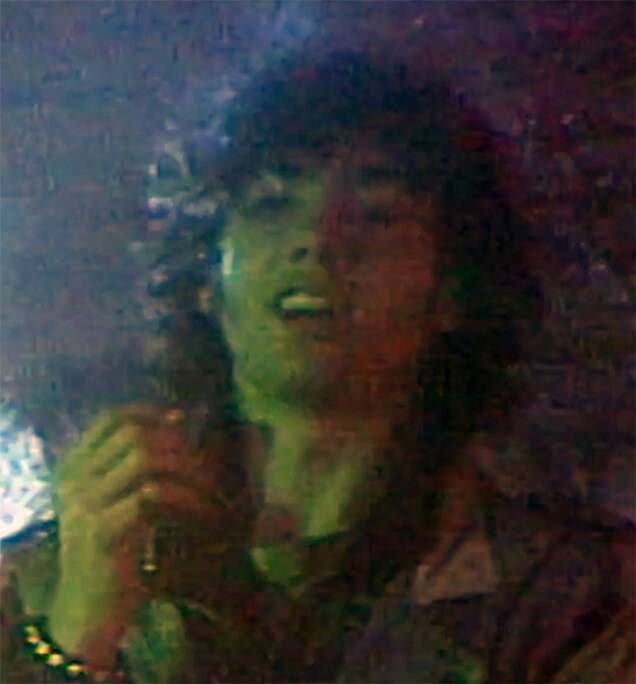
Dan Monick (Punk extra): I recall going to the Entry for a casting call. I remember folks being a little "oh yah? You guys are gonna judge whether we are qualified to be movie punks?" It was pretty funny. I was still in high school so getting out of class to hang out in a fake club and throw drinks was fine regardless of context.
Catherine Allan (Producer): We had a day-long casting call for extras held in downtown Minneapolis, with hundreds of people showing up. They were incredible; we couldn't have done the show without them.

Heather Lafaye (Punk extra): Nothing made by the media in those days had a very truthful, knowledgeable and/or positive slant on punk then. I was aware it was public television, however. This led me to believe it might be better than most. I had some faith in the liberals in Minnesota trying to do something a little more open minded.
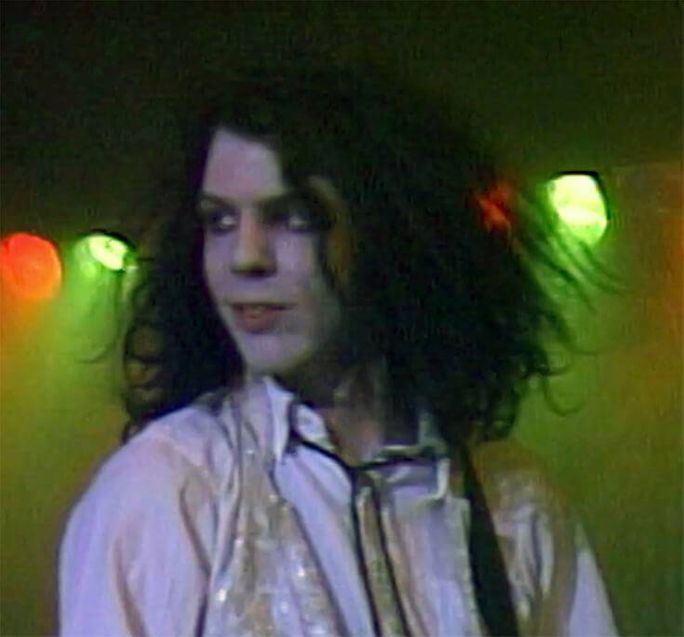
Tim Mitchell (Dark Carnival bassist): it seems like everybody knew there was this film being made about Twin Cities punk, and that they needed extras and bands from the scene. The band auditions were split into a few days, and as I recall it, each band played one or two songs. I was surprised that the Mofos and Dark Carnival were chosen - I love the Mofos as people and as a band, but we're talking two very different groups in style and substance, and both markedly different from the hardcore punks mostly seen in the film.
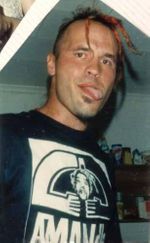
Walt Mayer (Assistant Set Designer): I went to the audition to be an extra. During the interview process, I mentioned some art training; I was hired and worked with Brad Chamberlain doing set design. I had access to the KTCA shop doing the fabrication for the Gulag sign, designed the logo and made styrofoam letters painted to look metallic and barbed wires painted red that intertwined the lettering. The same Gulag logo was used for screen printing t-shirts. Other duties included the flyers for the show scene, painting the club interior and the installation of the sign above the entrance of the rifle sport art gallery on 7th and Hennepin.
Bradley Chamberlin (Art Director - from Scene magazine 1986): We got in and completely transformed the place. But it was tough coming up with a good design. The night before our first day of shooting there, Ken Selden, the director, came in at 10 pm and said, "No, it isn't right." So I went out to get a cup of coffee, and on Hennepin, I ran into some kids who'd auditioned as extras. I told them my problem and they asked if they could help. I had about 15 cans of spray paint left and figured they couldn't make it any worse, so I turned them loose in the club. They changed the place within minutes. So I quickly bought about 30 more cans, and in the end it looked perfect.
Paddy Mulloy (Punk extra and Assistant Set Designer): Ken had asked me and a few other people to come the day before and spray paint the walls for set design credit. I feel kind of bad about agreeing to do that because it was then I decided to take a shot at Dark Carnival. In my group of friends, drug experimentation had given way to drug dependency for some of us. I had liked Dark Carnival's music and loved their look. The Replacements were getting huge, and so in Minneapolis, it wasn't hip to have that English punk look of haircuts and outfits, but I was strongly drawn to that then and I still am today. The rumor was that the Dark Carnival crowd was nothing but a bunch of dope bangers. Having no firsthand knowledge of that didn't stop me from believing it, and now my friends were using the needle and I was pissed. I had heard from someone that Dark Carnival was going to be the band in the movie, so when I went in to spray paint the walls, poorly I might add, I spray painted tall, thin clowns with needles hanging out of their arms on the wall behind where the band would be playing with the words "dark clowns" sprayed over the shitty painting. I don't remember if it was visible in the filming, but I think one of them called me out for it and, like a fool, I played dumb. Dark Carnival is an underrated band when people talk about the history of punk in Minneapolis.
Tim Mitchell (Dark Carnival bassist): The fact that they were actively seeking out actual local punks and punk bands made me think it wasn't going to be anti-punk, and that they were going for authenticity. Portraying punk accurately is always difficult, because it means different things to different people. That said, it offered a pretty dismal and misguided view of punk, punks, punk venues, etc. My main beef is that it mistook playful aggression and mock violence for the real thing. They nailed the alcoholism, though.
Catherine Allan (Producer): The Gulag scenes were exciting, ambitious and stressful shoots. Lots of great work by the KTCA creative team, but also technical problems, overtime and frazzled nerves. The punks were not a problem.
Tom Saeugling (Writer): I wasn't 't involved in the production. I had removed myself in the best interests of the finished film.
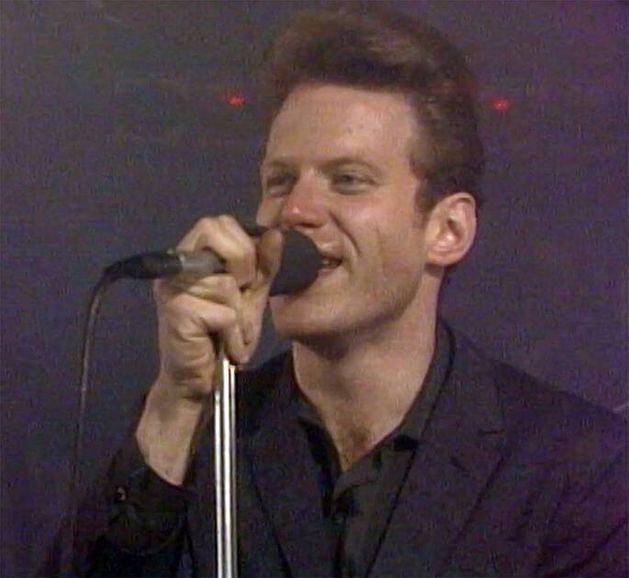
William Batson (The Mofos lead singer): The Mighty Mofos started in 1984, taking the garage band format, which we were familiar with from the Hypstrz since 1977 and trying to write our own songs. It's a shock to see our first bass player Caleb Palmiter in the movie, along with his song "Stranded" as the first song we are performing on stage. Also, to see our pals in Dark Carnival with Joe Martin backing up "Opie" Oswald is wonderful.
Tim Mitchell (Dark Carnival bassist): Dark Carnival was probably the first goth/darksider band in the Twin Cities, with strong punk, glam and metal influences. The lineup was essentially a power trio with four members - we had two drummers, which was awesome for me as a bass player. We would have been around 2 to 3 years at the point Half Life was filmed. In my biased opinion, we were a solid band with real potential. What killed it is that we didn't realize that, ourselves, until towards the end.
The set was located on the second floor at the corner of 6th and 1st, with the door facing the 6th street side. I think it's part of a parking lot now.
William Batson (The Mofos lead singer): The first thing I remember about the filming was the whole crew reminding me and my bandmates to not move around at all, just stand there and act bored. Those were their words to us, which is the exact opposite of our usual stage performance.
The actual filming was fun, and the bottles and drinks the posers threw at us was so old hat for us. We have lived through that many, many times, since 1978 or so. This crowd of extras were all faces I remember on the scene, but not so much at my shows. They were way too beautiful and decked out in their Sid and Nancy finest.
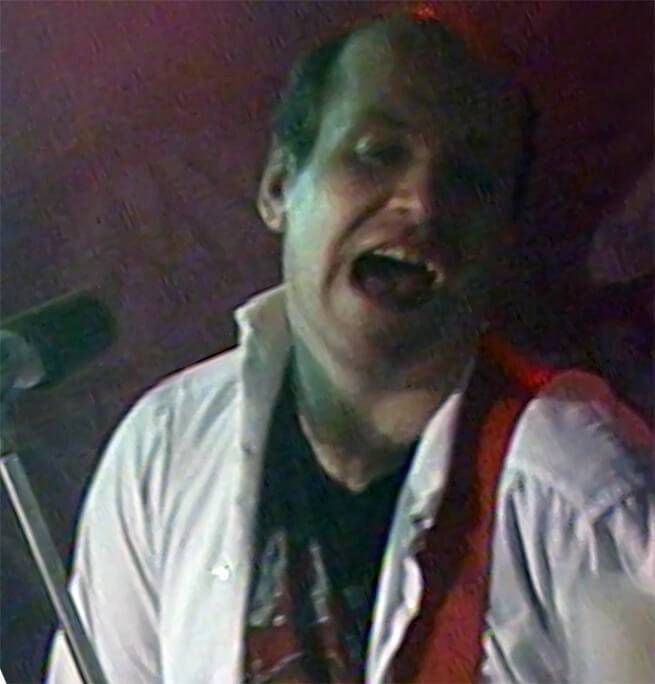
Ernest Batson (The Mofos guitarist): I remember the concert scene and the fight scene as being pretty silly. Bill knew most of the "young" punks, and I think he may have made it clear to them that too much, let us say, enthusiasm would not be looked upon kindly, nor forgotten. I remember it being cold and having to haul gear up to the second floor "club." As for the historical aspects, I guess it was sort of apparent while doing our scenes that it reflected the changing of the guard, so to speak. But overall, we didn't feel quite the dinosaurs the film sought to make us out...or has actually happened!
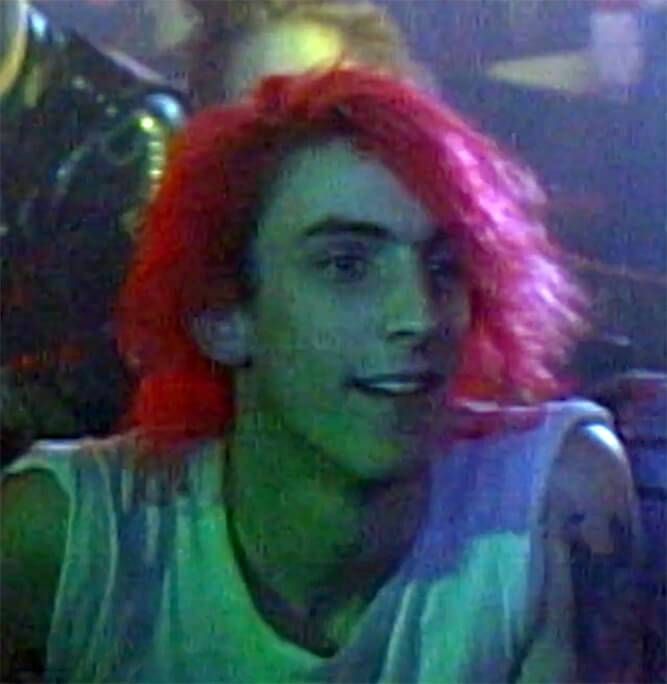
Todd Crawford (Punk extra): The days seemed long - a lot of standing around waiting. I actually suggested a couple scenes that they thought were good ideas and shot. They would set up the scene and what they wanted us to do. That's why I actually suggested a couple changes because what they wanted seemed stupid or unrealistic. The make-out scene with my girlfriend - that is one of the scenes I suggested. They wanted it to happen in the club, and I suggested we do it in the bathroom stall instead. I think we did it in one or two takes.

Daniel O. Turnland (Punk extra): One of the things I do remember about the shooting was that they had Oswald (the lead character) fronting Dark Carnival, and we were all supposed to go crazy at Oswald's "performance" as their frontman. The only problem, for me, was that the other band we were supposed to be all "meh" about, was the Mofos, who were one of the rockingest bands in town at the time. Suffice it to say, it wasn't very believable, even if you didn't know much about music.
Heather Lafaye (Punk extra): I am sure most of us were embarrassed and very confused about how we felt about the whole thing. I mean, why in the world would we be doing this to begin with. Were we selling ourselves down the river just to be in some dumb movie? Especially one that had such a pathetic message. The only stuff I remember after that was being embarrassed. I hate having to pretend things like enjoying the singer.
Todd Crawford (Punk extra): It was really weird. He obviously wasn't in the punk scene. Yet, they asked us to act like we liked it.

Joseph Martin (Dark Carnival guitarist and lead singer): All the bands' parts for the songs he sang were written specifically for the movie though. It was all weird (shooting scenes with Oswald as the lead singer), especially at first, when I think the director had told him to act all scared. The bits with Dark Carnival were very well produced. Ozwald [played by Gary Hershberger] did a really good job with "This Is What Cities Are Like."
Tim Mitchell (Dark Carnival bassist): It kinda was weird. I remember that being a lot of takes - imagine writing a song with a new lead singer the very first day they join, and it's going on film for eternity. We had to do it twice, once for each of the poems. I was to keep playing during the riot "like Nero watching Rome burn." However, I will say that Joe could've taken him. Joe has had actual combat training.
I remember one of the younger hardcore punks, whom I didn't know well, telling me that if we played music like the riot song all the time, they'd come see us more. Kind of annoying, because we wrote that in about 15 minutes, since it didn't need any breaks or changes.
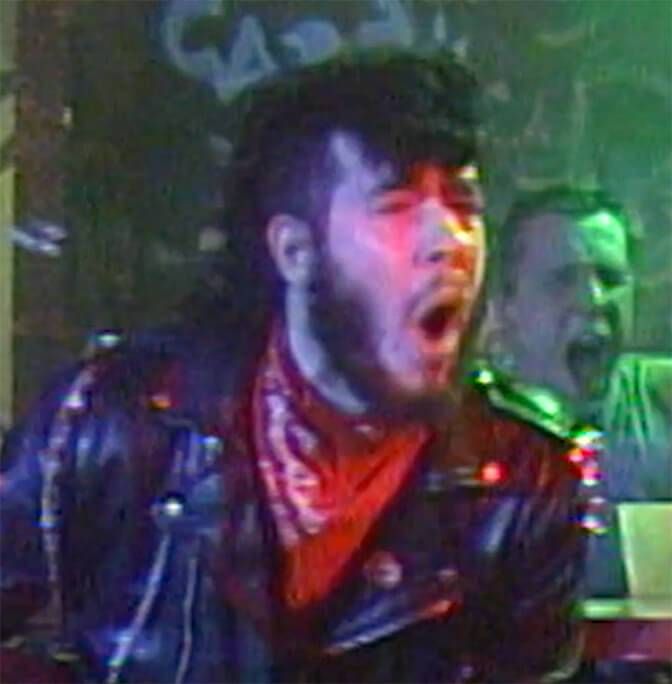
Philip Schwartzberg (Punk extra): For sure we were directed to jeer at the Mofos. Which is something that would never have happened in real life, because everyone loved the Mofos, at least I did. And obviously we were directed as to how to act when the kid got on stage with Dark Carnival since they wanted to show the reactions they needed for the storyline. Dark Carnival was one of my favorite bands at the time, so it was a little strange to have the kid on stage with them. But we all knew that that was part of the story and went with it. And we were for sure directed as to how to respond to his performance. That said, it was okay in my memory.
Todd Crawford (Punk extra): We were all just hanging out on set - we all knew each other, so it was like a bunch of friends hanging out until they needed us for something.
Philip Schwartzberg (Punk extra): It was fun, insofar as it was hanging out with a bunch of people who had similar interests in a different setting. There was a fair amount of down time, so there was a lot of shooting the breeze. While I'm pretty sure the crew wanted us sober, there was a lot of alcohol brought in, and I was at least slightly drunk a lot of the time. I think we were treated well, but I'm sure we could have been treated better. I don't remember any catering for the extras. I sorta remember going out to grab food and drink during longer breaks. I think that that was part of what the director wanted, to convey how unruly the punks were, at least from the perspective of what they wanted to get on film. I think that, for the most part, it was orderly chaos. We were a pretty disorderly bunch, and I have a vague memory of being yelled at - not individually, but as a group - at some point when we weren't doing what the director was wanting. I don't think that it ever felt out of control.

Stefan Bergeron (Punk extra): I think a few people snuck some booze in - I could even have been in on it, although it was a long time ago your honor and I'm having trouble remembering. The drink throwing was actually pretty fun! We made a wee bit of fun of the lead actor and pelted Susie Garcia (RIP) and her friend with a few drinks. Stupid humor cause they had to go and fix their hair.
Philip Schwartzberg (Punk extra): it was pretty obvious that Half Life wasn't going to accurately portray punk culture, at least not the culture that I experienced. I don't ever really recall people throwing drinks at bands as happens in the bar scenes in the movie. And frankly, I always felt that the crowd was pretty cool in the venues that they went to. Most people didn't want to get 86ed, so they tended not to shit in their nest. I think that if they had wanted to show the rougher side of punk, there should have been a house party scene, as you could always count on someone acting pretty stupid at a basement party.
Dan Monick (Punk extra): The shitty club set and the vibe of the lead actors gave an indication that all was not well with the representation of just about anything. I remember it being pretty awesome. We just hung out and smoked a million cigarettes.
Stefan Bergeron (Punk extra): The direction was super simple, you go dance in the crowd, you stand by the bar, etc. As I recall, I only did a couple of the shoots, then I split because it just was mostly boring. I know I left before the wrap.
Tim Mitchell (Dark Carnival bassist): This is when I discovered that being in a film is tedious, boring, repetitive work - do this little thing; now do it 10 times more; now do this next little thing. It wasn't fun, and film actors earn their pay the hard way. I've since been crew on one film, and I'd much rather do that again. That said, we were treated very well; I don't remember the director, Ken Selden, raising his voice once. Not even when he fell asleep, and we got goaded into playing something loud and horrible to wake him up.
Catherine Allan (Producer): Usually to get a riot in a film, you take three or four nights, but we couldn't do that. So we called in a fight choreographer, and we broke the kids up into groups, each with a job to do. Some broke spun-glass bottles on heads, some tied people up, others pulled punches, and one person had to throw somebody onto the bowling machine. They knew just what to do, and nobody got hurt.
Paddy Mulloy (Punk extra and Assistant Set Designer): I don't remember much about the shooting of the movie or how we were treated. When they shot the scene where I introduce the lead male to the lead female by throwing him into her, I remember everybody being tense about whether or not I understood that I don't actually throw the guy, but rather let him throw himself and I just make the motions. I remember talking to some sorta stunt coordinator, and I'm telling him I understood, but it didn't seem to be enough, and it felt like they were all holding their breath until the scene was done. Ken, the actors, the dude that explained it to me, everybody. But the set never felt out of control or anything. If anything, it felt a little stiff, and they must not have paid us or had a good spread because, at some point, me and a friend split and never returned, so we must have ran out of our own treats.
Philip Schwartzberg (Punk extra): I was set up to get thrown over the bar, which took two or three takes if memory serves. I injured my left foot on the final take, not seriously, but I used crutches for a few days. I don't think that bit made it into the final cut. I don't remember how they were handled much. I was also in some of the pit filming, and that was pretty much just letting us do our thing, not much different than loads of actual shows, though perhaps people hammed it up a bit for the cameras.
Paddy Mulloy (Punk extra and Assistant Set Designer): I ended up getting a set design credit and a line when the lead male in the scene was cleaning up vomit and mopped it over my boot because he was staring at the lead female's waitress character. "Watch the mop, plowboy!" And then I throw him into her.
Dan Monick (Punk extra): Yeah, it was pretty funny. Definitely some eye rolling, but Dark Carnival were the shit to me at the time, so that was cool. I remember Rod [the drummer] telling me about the Rimbaud lyrics. I had never heard of him, so we thought that was super cool. So yeah, that movie is how I learned about Rimbaud.
Catherine Allan (Producer): It was a challenging project, primarily because of the director, who did not communicate well with Tom or the crew. He smoked a lot of weed and was high much of the time. Very hard to pin down on creative decisions and logistics. The film went over budget. On top of everything else, I was pregnant throughout the shoot.
Heather Lafaye (Punk extra): I am not sure who the older gentleman neighbor is, but he was the best thing in there. I still think it was so cliche in a bad way. Like the idea of archetypal stories, you know like Joseph Campbell, but sticking so closely to the archetype that it had no originality. The whole moral fable of the thing was quite pathetic as well. It was just insulting to your intelligence. It really felt kind of like Rebel Without a Cause meets Romeo and Juliet. The video was not as amateurish as it appeared during the filming, however that doesn't mean I thought it was well done.
Tom Saeugling (Writer): One thing I want to remember is the man Hector was based on. He was a Scot named Jimmy that I met in Germany. We travelled back to England together and became good friends. He was an artist at heart with a poetic mind. He worked his whole life in a factory and lost both children he and his wife had to childhood disease. He loved the opera and fine arts and would take me to museums in London to teach me about the finery of jewelry, cameos and the like. He sang opera songs to me on the way back from Germany. I would go to visit him in Bristol, and he would come see me in London. We tromped the streets like an old bum and a young bum. I told him about punk rock bands as being the operas of today and he was aghast. "Mien Gott," he would say, "The west really is at the end!"
Walt Mayer (Assistant Set Designer): Overall impression is that it was a great experience and brought together a colorful array of people from the scene who participated.
After seeing the movie it was kind of a let down with the portrayal of the main characters being something from an after-school special Remember those? With a message of a passing fad and a growing up experience.
This is what life's about!
Stefan Bergeron (Punk extra): Well, it certainly is a period piece. I do remember thinking it was crap at the time. Have to say the rewatch didn't do it many favors.
Todd Crawford (Punk extra): I thought it was an awful movie - acting was bad and it didn't represent anything close to reality, but it was cool because we were all in it.
Paddy Mulloy (Punk extra and Assistant Set Designer): I remember liking seeing everybody I knew from the corners and basements around town, but I don't remember being that interested in it or feeling any sense of pride watching the film. It was a fun waste of time, and we were gonna sit around and do nothing on some corner or in some basement anyway. So why not try something new.
Tom Saeugling (Writer): I really don't have anything to say about the movie. It's kind of like abandoning your child at birth and then commenting on the young adult someone else raised.
Dan Monick (Punk extra): It was fun. We thought and kinda hoped that the movie was gonna be cool. They were featuring Dark Carnival and, being more of a goth than a punk, I thought that was awesome. I remember they billed it as a black comedy, which seemed like their spin because it was so bad. In hindsight, it's kind of an amazing document of the people and the city in the '80s . Rewatching it, I remember and or knew every person in those bar scenes.
Tim Mitchell (Dark Carnival bassist): I liked seeing so many of my friends on camera and of course the Dark Carnival stuff, but I was mostly indifferent. I hadn't realized Oswald was pretending to have written the Rimbaud stuff himself, and I was irked at the idea that not one punk in the crowd had read Rimbaud. However, I was very happy with my bass not getting lost in the mix, so there was that.
William Batson (The Mofos lead singer): Watching it again, I was pleasantly surprised, the actual actors were better than I recalled. But the depiction of a music scene in this film was so far from reality, it is laughable. The whole project had their head up their ass, they make the Quincy punk episode look like Shakespeare. Complete Fluff.
Daniel O. Turnland (Punk extra): As far as portraying punk goes, it was the typical, "lead character comes from small town farm, experiments with fringe elements of society because he wants to impress fringe girl, and 'discovers' he is much happier going back to the farm and 'normalcy,' but he'll always have that crazy experience to remember his youth by." I don't remember if they paid us or not; we just wanted to have fun, and it was.
Philip Schwartzberg (Punk extra): I just don't see people getting out of jail and then tossing their leather jacket in the trash can and saying, "I'm done." It would have felt more real if there was a basement party with a band and a keg, and that would have been a good place for the kid to get arrested after the cops show up to break up the party at 2 am when the neighbors have had enough. And frankly, I can't ever recall anything that came close to being a brawl at any space, especially a place like the Entry or First Ave. In fact, looking back, I'd say that, in many ways, people were pretty well behaved. Certainly no worse than frat boys or lots of other young, mostly male groups.
Tim Mitchell (Dark Carnival bassist): I liked how purely Twin Cities the movie is - even if it didn't quite live up to my expectations, it was all shot here, with Twin Cities punks, and Twin Cities bands, for Twin Cities public television. It's so obviously '80s, but set in the '70s. Also, the portrayal of punks as unsympathetic, violent lunkheads who would rather throw drinks at bands than listen to them - it depicted an imaginary punk scene well. Totally missed the camaraderie, generosity and friendliness of the scene. In Minnesota, even the punks were nice.
Catherine Allan (Producer): I remember being disappointed. Partly because the experience of making it was not great. But also I don't think in the end the story held together.
Joseph Martin (Dark Carnival guitarist and lead singer): The entire premise of a pig farmer giving up that life to be a punk singer is bullshit. Do you have any idea how much money pig farmers make?
Movie cheat sheet - if you don't want to sit through the whole thing:
00:29 That's KTCA lighting designer Joe Price as the pig farmer father. He spent more than 30 years lighting the show Almanac. His most famous role was as Detective #1 in the 1978 b-movie Attack of the Killer Tomatoes.
02:40 The Mofo's poster with wrestler Dick the Bruiser can be seen.
02:46 Long-gone Mexican restaurant Chichi's can be seen on the corner of 6 and Hennepin. This restaurant chain stopped serving food in the US in 2004, but still has restaurants in parts of Europe and the Middle East.
03:02 Minneapolis hardcore band Final Conflict can be heard on the soundtrack with their song "Your."
03:56 The first time we see The Mofo's on stage at the Gulag.
05:00 Paddy Mulloy pushes main character into a wall.
05:52 We can see that the Gulag is located on Block E, between Brady's Pub/Rifle Sport arcade and the 6 Street Shinders. (At the end of this shot, the camera pans over to see a red MTC bus – remember red MTC busses?)
06:08 A view down 6 Street in downtown Minneapolis we will never see again.
12:13 The second appearance by The Mofo's.
14:40 A brief appearance and speaking part by Rod Welles, Dark Carnival's drummer.
22:17 A brief exterior shot of Tatters thrift store, (R.I.P.)
24:10 Oswald rehearses with Dark Carnival.
28:30 Dark Carnival as backing band to Oswald Apocalypse
29:24 The graffiti "Pete Avi$," can be seen on the wall. This is in reference to Peter Davis who published Your Flesh fanzine and booked shows at local venues. Some of the local punks apparently had issues with him.
29:38 Daniel O. Turland is really, really getting into the band.
36:28 A great shot of Block E with Moby's bar and the Best Steak House.
37:21 Hüsker Dü's song "Dreams Reocurring" from the album Zen Arcade can be heard on the soundtrack.
46:48 In the credits, "Chance for Living" by GBH is incorrectly titled as "Change for Living."
46:54 In the credits "Dreams Reoccurring" by Hüsker Dü is incorrectly titled as "Dreams Reoccuring."

This story is made possible by the Arts and Cultural Heritage Fund and the citizens of Minnesota.
